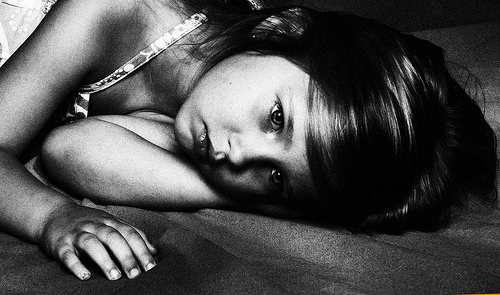I’m just finishing up the first 10 days of my fall sprint at intensive fieldwork. I’m a long way from being about to synthesize what I’m seeing but I wanted to share a few things since many of you are curious about my observations.
First off, Nashville is a great city to do fieldwork because of a mix of different dynamics taking place here. There’s the obvious suburban dynamics which are really notable here, especially given some of the extraordinarily wealthy suburbs which their posh football fields and McMansions. But even in the low income regions, there are really interesting things going on, both in the city and in the suburbs. On one hand, you have amazing local organizations dedicated to youth culture. The public library’s facility for teens is better than anything I’ve seen in any public library in the States and boy do teens flock there after school to play with the Wii, get free snacks, do homework, get on the computer, and even read books. The energy after school is fantastic. The library and rec center are where many teens go after school to wait for their parents to pick them up or because they live close to these places and find them to be more fun than going home (for a whole host of reasons). Of course, the teens that go to these places aren’t necessarily representative of all teens in Nashville. One teen told me that the types of people who went to the library are “ghetto” which is why she won’t go there. Still, many of the teens that I met there are trying to stay out of trouble and it was great to see a place for them to go. Likewise, Rocketown, a club founded by Christian musician Michael W. Smith is a popular place for youth trying to keep out of trouble. And there’s a Youth Opportunity Center and a whole host of other organizations working to create activities and opportunities for teens. And, unlike many regions I’ve been in, many of the retailers and fast food joints employ teens.
And then there’s the flipside… There are drug issues, namely pills (although oddly, heroin also seems to be coming back). And gangs. Sure, there are gangs in other cities, but the Kurdish Pride gang down here is quite unique. Kurdish Pride is filled with teens and young adults who come from middle/upper-class two-parent families and are doing well in school, but are engaged in a two-front gang warfare battle. On one hand, they’re trying to stand up to the black and Hispanic gangs here; on the other, they’re trying to show that they’re tough to their cousins back in Iraq, Iran, and elsewhere. Things escalated post 9/11 and I can’t imagine that all of this anti-Islamic fever is helping anything down here at all.
A lot of how Nashville is organized depends on transportation, with teens in the suburbs rarely making it into the city because of lack of transportation (and familial rejections of the bus). Malls and movies trump everything in terms of hang out spaces for suburban youth, with parks operating as a critical site for urban youth. All of the youth centers and whatnot are located downtown, although some of the megachurches have great youth programs in the suburbs. Things like football games and Young Life are still playing a huge role in the communities. The biggest socio-economic mixing seemed to have happened at the Opry Mills Mall (which shut down after the flood) and among kids who attend magnet schools or other specialty schools (of which there are some phenomenal ones here… sadly, though, the typical public schools leave much to be desired). As always, geography and mobility really shape the social dynamics.
Anyhow, I could go on and on about the social dynamics of Nashville which are totally fascinating and require much more nuance than I can offer in 3 paragraphs, but I’m sure what you really want to know is about technology. Simply put, technology is really fading into the background and is mostly being used on top of everything else that teens are doing. Teens who are more likely to be stuck at home (namely the teens from wealthier families) are much more consciously engaged in the technology for technology sake, much more likely to sit and chat on Facebook because it’s Facebook. Cell phones are everywhere with texting at unbelievable levels across socio-economic divisions. But teens are treating technology with the same level of emotional connection as they treat their clothes. Some are obsessively passionate about it and some just see it as a functional thing that they may or may not want to engage with.
Some fun little things that I found intriguing… All of the MySpace Top 8 stuff has reappeared in Facebook under “siblings” as teens list their closest friends as their brothers and sisters (which requires confirmation). While joining “groups” used to be a cool way of doing identity marking, it’s now all about clicking “Like” to funny things that get passed around. Relationships aren’t official until they’re “Facebook official.” MySpace isn’t dead among teens but the socio-economic issues around it are extremely pronounced and those who are on MySpace are typically also on Facebook at this point. MySpace and YouTube are ground zero for law enforcement doing gang intelligence. Particularly interesting given that Facebook is heavily used by the Kurdish Pride kids to connect with family back in Iraq; both sides post photos with guns to show toughness and connection. And I confirmed the reality that Facebook is pretty darn public for these teens – available to everyone that they know. And they know very little about how to manage their settings but feel like Facebook’s defaults must be what they should use.
I also heard some pretty crazy heart-wrenching stories. For example, complications to the sexting picture in the news. A boy that I met shared his cell phone with his mother. He takes the phone during the day and she takes it at night. His mother appears to be promiscuous (“gets around”). All day long, he receives naked photos of older men to his cell phone intended for his mother. He’s terrified that his friends will see those pictures and think that they’re intended for him. He’s super embarrassed about his mother but too uncomfortable to confront her.
Anyhow, there’s a lot more in all of my notes that I still need to process and think through what I have before I can offer more conceptual reactions but I wanted to share a little bit of what I’ve seen. And thanks to everyone who has been so supportive and welcoming. There are some truly dedicated folks in Nashville trying to make a difference and it really warms my heart to see so many dedicated folks working to help teens.
More soon! (Next stop… Raleigh and Durham.)
 Henry Jenkins, Mimi Ito, and I have embarked on an interesting project for Polity. Through a series of dialogues, we’re hoping to produce a book that interrogates our different thoughts regarding participatory culture. The goal is to unpack our differences and agreements and identify some of the challenges that we see going forward. We began our dialogue this week and had a serious brain jam where we interrogated our own assumptions, values, and stakes in doing the research that we each do and thinking about the project of participatory culture more generally. For the next three weeks, we’re going to individually reflect before coming back to begin another wave of deep dialoguing in the hopes that the output might be something that others (?you?) might be interested in reading.
Henry Jenkins, Mimi Ito, and I have embarked on an interesting project for Polity. Through a series of dialogues, we’re hoping to produce a book that interrogates our different thoughts regarding participatory culture. The goal is to unpack our differences and agreements and identify some of the challenges that we see going forward. We began our dialogue this week and had a serious brain jam where we interrogated our own assumptions, values, and stakes in doing the research that we each do and thinking about the project of participatory culture more generally. For the next three weeks, we’re going to individually reflect before coming back to begin another wave of deep dialoguing in the hopes that the output might be something that others (?you?) might be interested in reading. Networked technologies – including the internet, mobile phones, and social media – alter how information flows and how people communicate. There is little doubt that technology is increasingly playing a role in the practices and processes surrounding human trafficking: the illegal trade of people for commercial sexual exploitation, forced labor, and other forms of modern-day slavery. Yet, little is known about costs and benefits of technology’s role. We do not know if there are more human trafficking victims as a result of technology, nor do we know if law enforcement can identify perpetrators better as a result of the traces that they leave. One thing that we do know is that technology makes many aspects of human trafficking more visible and more traceable, for better and for worse. Focusing on whether technology is good or bad misses the point; it is here to stay and it is imperative that we understand the role that it is playing. More importantly, we need to develop innovative ways of using technology to address the horrors of human trafficking.
Networked technologies – including the internet, mobile phones, and social media – alter how information flows and how people communicate. There is little doubt that technology is increasingly playing a role in the practices and processes surrounding human trafficking: the illegal trade of people for commercial sexual exploitation, forced labor, and other forms of modern-day slavery. Yet, little is known about costs and benefits of technology’s role. We do not know if there are more human trafficking victims as a result of technology, nor do we know if law enforcement can identify perpetrators better as a result of the traces that they leave. One thing that we do know is that technology makes many aspects of human trafficking more visible and more traceable, for better and for worse. Focusing on whether technology is good or bad misses the point; it is here to stay and it is imperative that we understand the role that it is playing. More importantly, we need to develop innovative ways of using technology to address the horrors of human trafficking.